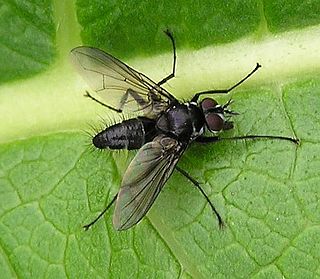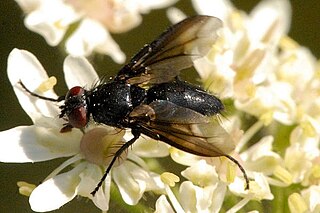
Acemya is a genus of flies in the family Tachinidae.
Chromatophania is a genus of flies in the family Tachinidae.
Erythrocera is a genus of flies in the family Tachinidae.
Estheria is a genus of flies in the family Tachinidae.

Nemoraea is a genus of flies in the family Tachinidae.
Pandelleia is a genus of flies in the family Tachinidae.
Periscepsia is a genus of bristle flies in the family Tachinidae.
Phebellia is a genus of flies in the family Tachinidae.

Medina is a genus of flies in the family Tachinidae.
Zenillia is a genus of flies in the family Tachinidae.

Zeuxia is a genus of flies in the family Tachinidae.

Linnaemya is a genus of flies in the family Tachinidae.

Voriini is a tribe of flies in the family Tachinidae. More junior homonyms exist of Wagneria than any other animal genus name.

Ramonda is a subgenus of flies in the family Tachinidae.

Exoristinae is a subfamily of flies in the family Tachinidae. Most species are parasitoids of caterpillars.

Eryciini is a tribe of flies in the family Tachinidae.

Exoristini is a tribe of flies in the family Tachinidae.

Goniini is a tribe of parasitic flies in the family Tachinidae. Members of Goniini are distinguished from other Tachinidae by laying small "microtype" eggs that hatch only after being ingested by a host.

Leskiini is a tribe of flies in the family Tachinidae.

Minthoini is a tribe of flies in the family Tachinidae.












